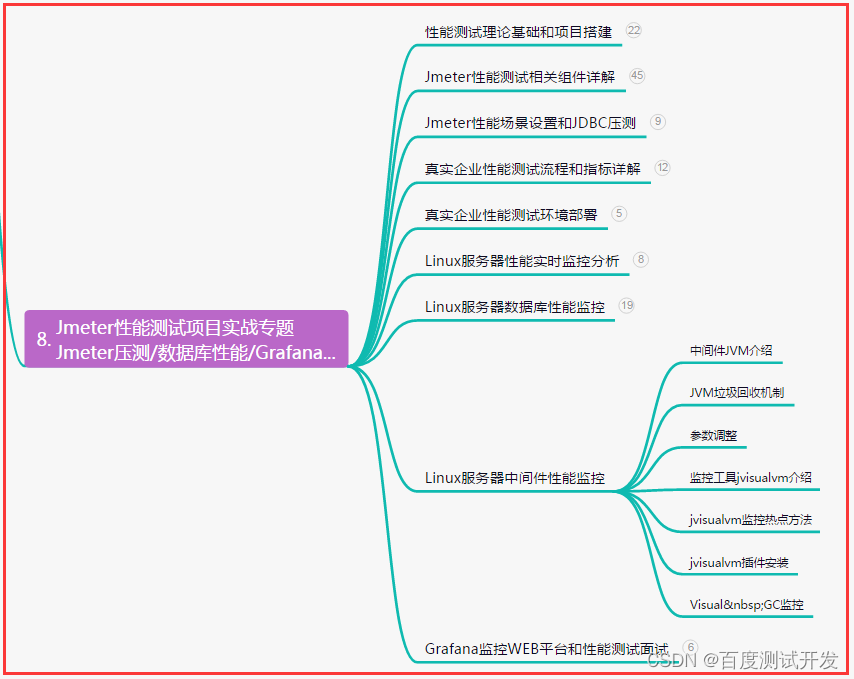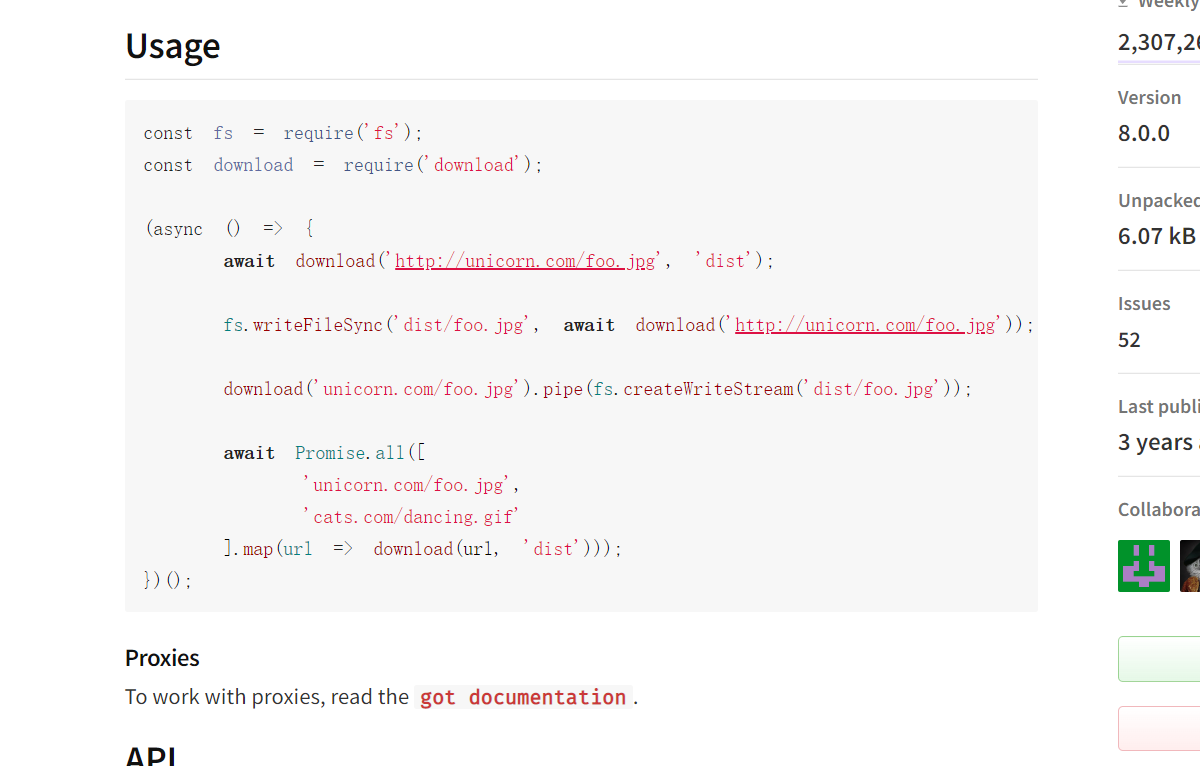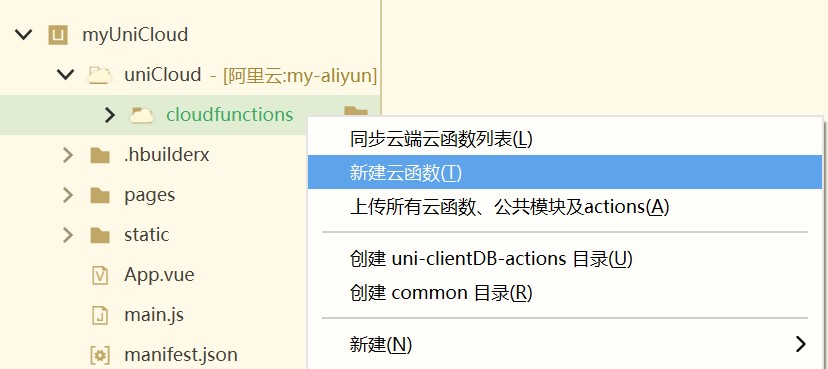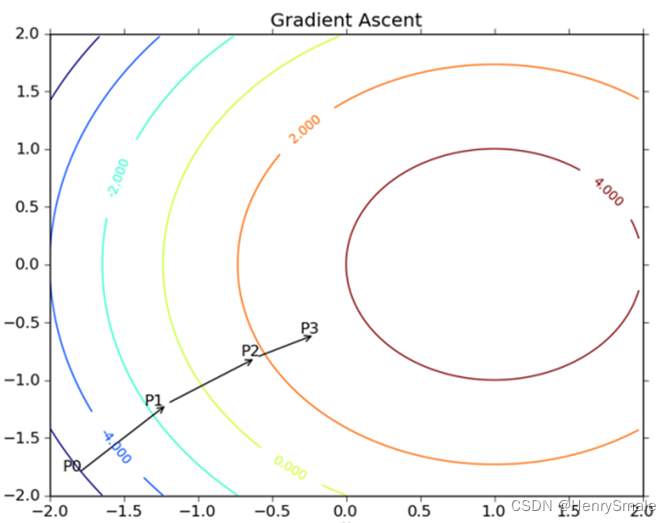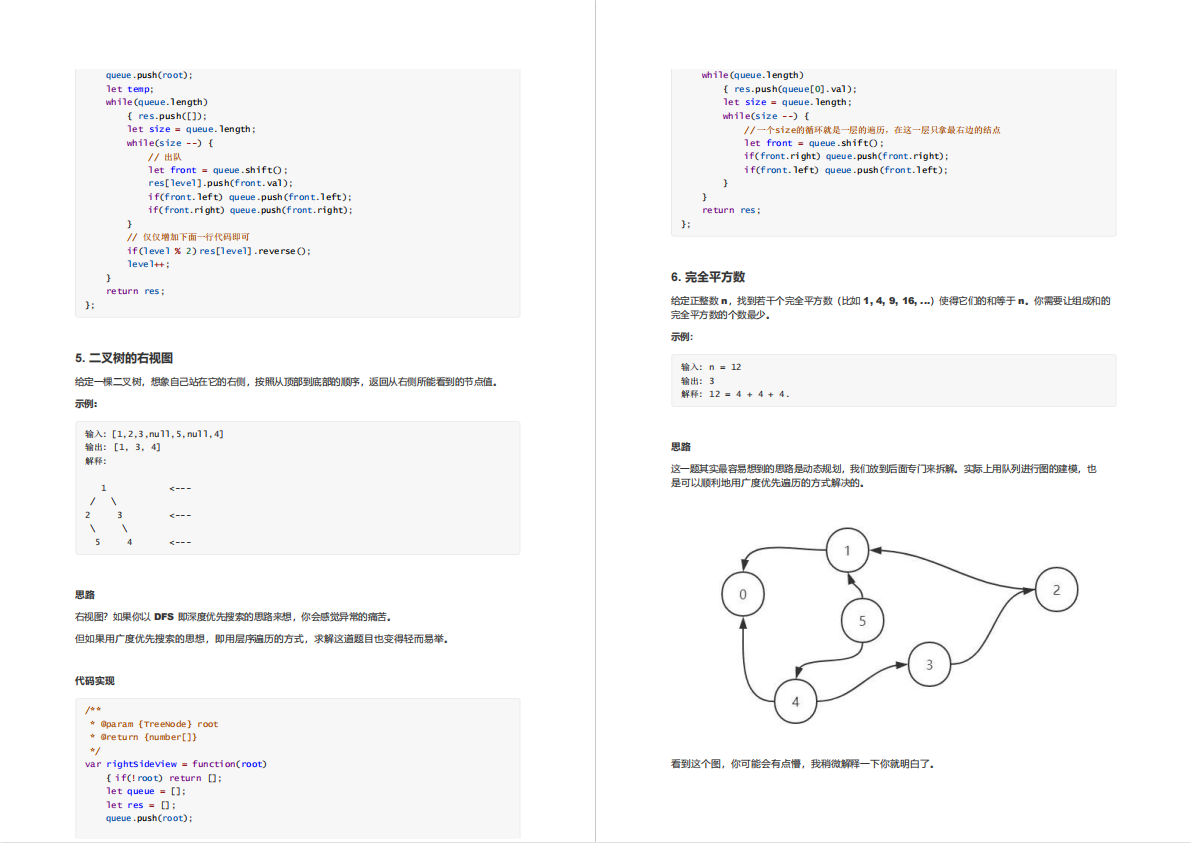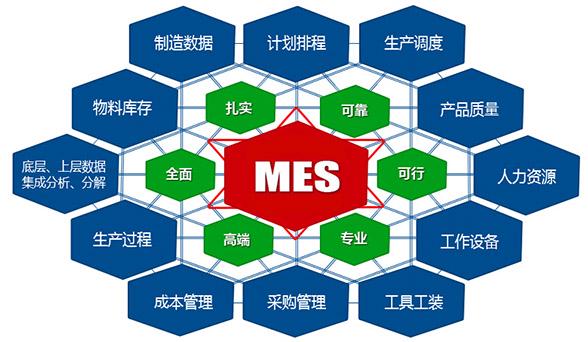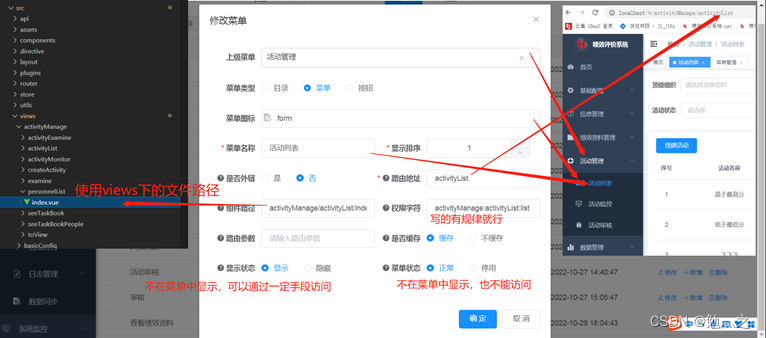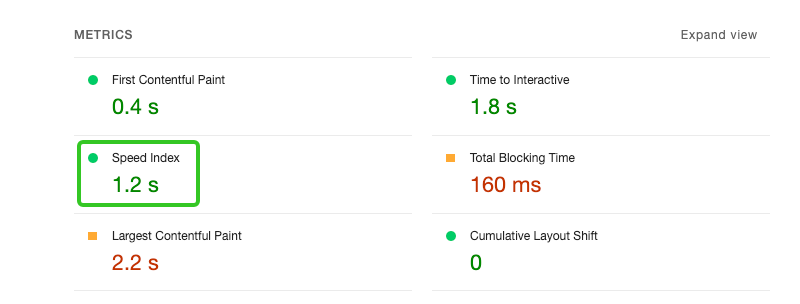part1 – https://blog.csdn.net/qq_41080854/article/details/129204480
part2 – https://blog.csdn.net/qq_41080854/article/details/129224785
面试必刷101 Java题解 -- part 3
- 动规五部曲
- 71、斐波那契数列
- 72、跳台阶
- 73、最小花费爬楼梯
- 74、最长公共子序列(二)
- 75、最长公共子串
- 76、最长上升子序列(一)
- 77、最长连续序列
- 78、不同路径的数目(一)
- 79、把数字翻译成字符串
- 80、把数字翻译成字符串2
- 背包问题
- 01背包
- 完全背包
- 装满背包
- 81、兑换零钱(一)
- 零钱兑换 II
- 82、连续子数组的最大和
- 83、编辑距离(一)
- 84、正则表达式匹配
- 85、最长的括号子串
- 86、打家劫舍(一)
- 87、打家劫舍(二)
- 88、买卖股票的最好时机(一)
- 89、买卖股票的最好时机(二)
- 90、买卖股票的最好时机(三)
- 91、主持人调度
- 92、旋转数组
- 93、字符串变形
- 94、最长公共前缀
- 95、大数加法
- 96、合并两个有序的数组
- 97、合并区间
- 98、反转字符串
- 滑动窗口
- 99、最小覆盖子串
- 100、最长无重复子数组
- 49、滑动窗口的最大值
- 101、盛水最多的容器
- 102、接雨水问题
- 103、分糖果问题
- 104、螺旋矩阵
- 105、顺时针旋转矩阵
- 106、LRU
- 107、设计LFU缓存结构
动规五部曲
- 确定dp数组(dp table)以及下标的含义
- 确定递推公式
- dp数组如何初始化( length + 1 一般不用初始化, length是一定要初始化的)
- 确定遍历顺序
- 举例推导dp数组
71、斐波那契数列
public class Solution {
public int Fibonacci(int n) {
if(n <= 1) return n;//终止条件
return Fibonacci(n -1) + Fibonacci(n - 2);
}
}
public class Solution {
public int Fibonacci(int n) {
int[] dp = new int[n + 1];
if(n <= 2) return 1;
dp[0] = 0;
dp[1] = 1;
for(int i = 2; i < n + 1; i++){
dp[i] = dp[i - 1] + dp[i - 2];
}
return dp[n];
}
}
72、跳台阶
动态规划的核心思想就是拆分子问题,记住过往,减少重复计算。
动态规划:
1.定义状态:青蛙跳上一个 n 级的台阶总共有多少种跳法
2.编写状态转移方程:f(n)=f(n-1)+f(n-2)
3.设置初始值:f(0)=1,f(1)=1 到达0台阶的方法有一种,就是不跳
public class Solution {
public int jumpFloor(int target) {
if(target==0 ||target==1) return 1;
if(target==2) return 2;
int []dp=new int[target+1];
dp[0]=1;
dp[1]=1;
for(int i = 2;i < target + 1; i++)
{
dp[i]=dp[i-1]+dp[i-2];
}
return dp[target];
}
}
73、最小花费爬楼梯
import java.util.*;
public class Solution {
public int minCostClimbingStairs (int[] cost) {
// write code here
if (cost.length == 1) return cost[1];
//dp[i]表示爬到第i阶楼梯需要的最小花费
int[] dp = new int[cost.length + 1];
for (int i = 2; i < cost.length + 1; i++) {
//每次选取最小的方案 , 过去的记录 + 现在的子问题
dp[i] = Math.min(dp[i - 1] + cost[i - 1], dp[i - 2] + cost[i - 2]);
}
return dp[cost.length];// 0 ~ cost.length = cost.length + 1 。0状态占用一格
}
}
74、最长公共子序列(二)
子序列不连续
dp[i][j] 表示 str1 的前 i 个字符和 str2 的前 j 个字符的最长公共子序列。
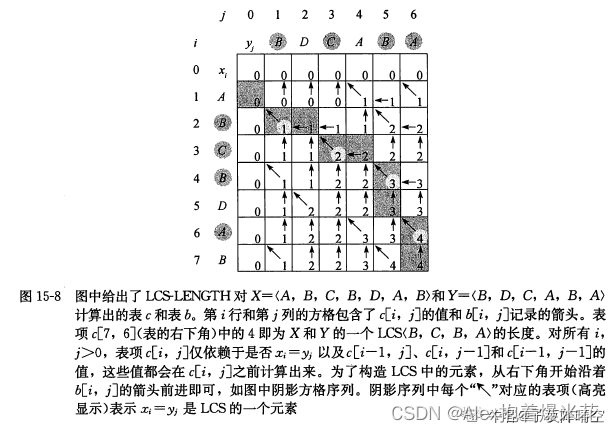
import java.util.*;
public class Solution {
public String LCS (String s1, String s2) {
// write code here
int m = s1.length(), n = s2.length();
String[][] dp = new String[m + 1][n + 1];
for (int i = 0; i < m + 1; i++) {
for (int j = 0; j < n + 1; j++) {
if (i == 0 || j == 0) dp[i][j] = "";
else if (s1.charAt(i - 1) == s2.charAt(j - 1)) {
dp[i][j] = dp[i - 1][j - 1] + s1.charAt(i - 1);
} else {
dp[i][j] = dp[i - 1][j].length() > dp[i][j - 1].length() ? dp[i - 1][j] :
dp[i][j - 1];
}
}
}
return dp[m][n] == "" ? "-1" : dp[m][n];
}
}
class Solution {
public int longestCommonSubsequence(String text1, String text2) {
int m = text1.length(), n = text2.length();
int[][] dp = new int[m + 1][n + 1];
for (int i = 1; i < m + 1; i++) {
char c1 = text1.charAt(i - 1);
for (int j = 1; j < n + 1; j++) {
char c2 = text2.charAt(j - 1);
if (c1 == c2) {
dp[i][j] = dp[i - 1][j - 1] + 1;
} else {
dp[i][j] = Math.max(dp[i - 1][j], dp[i][j - 1]);
}
}
}
return dp[m][n];
}
}
75、最长公共子串
子串是连续的
import java.util.*;
public class Solution {
public String LCS (String str1, String str2) {
// write code here
int[][] dp = new int[str1.length() + 1][str2.length() + 1];
//因为是连续的,所以记住最后的位置和长度即可
int maxlength = 0;
int maxindex = 0;
for (int i = 1; i < str1.length() + 1; i++) {
for (int j = 1; j < str2.length() + 1; j++)
{
if(str1.charAt(i - 1) == str2.charAt(j - 1)){ //如果该两位相同
dp[i][j] = dp[i - 1][j - 1] + 1;
if(dp[i][j] > maxlength){//更新最大长度
maxlength = dp[i][j];
maxindex = i - 1; //长度 - 1 ,最前面是空
}
}else{
dp[i][j] = 0;//该位置为0
}
}
}
return str1.substring(maxindex - maxlength + 1,maxindex + 1);
}
}
76、最长上升子序列(一)
import java.util.*;
public class Solution {
public int LIS (int[] arr) {
// write code here
if (arr.length == 0) return 0;
int[] dp = new int[arr.length];
//设置数组长度大小的动态规划辅助数组 dp[i]表示以下标i结尾的最长上升子序列的长度
Arrays.fill(dp, 1);
int res = 1;//只有一个数字时为1
for (int i = 1; i < arr.length; i++) { //i = 0也可以
for (int j = 0; j < i; j++) { //子数组
if (arr[i] > arr[j]) {
//i点比j点大,理论上dp要加1
dp[i] = Math.max(dp[i], dp[j] + 1);
//找到最大长度
res = Math.max(res, dp[i]);
}
}
}
return res;
}
}
77、最长连续序列
class Solution {
public int longestConsecutive(int[] nums) {
HashSet<Integer> set = new HashSet<>();//连续序列不允许重复
for(int i = 0; i < nums.length; i++){
set.add(nums[i]);
}
int res = 0;
for(int i = 0; i < nums.length; i++){
if(!set.contains(nums[i] - 1)){//找到了头
int num = nums[i] + 1;
while(set.contains(num)){
num++;
}
res = Math.max(res, num - nums[i]);
}
}
return res;
}
}
78、不同路径的数目(一)
import java.util.*;
public class Solution {
public int uniquePaths (int m, int n) {
// write code here
int dp[][] = new int[m][n];
for (int i = 0; i < n; i++) {
dp[0][i] = 1;
}
for (int i = 0; i < m; i++) {
dp[i][0] = 1;
}
for (int i = 1; i < m; i++) {
for (int j = 1; j < n; j++) {
dp[i][j] = dp[i - 1][j] + dp[i][j - 1];
}
}
return dp[m - 1][n - 1];
}
}
79、把数字翻译成字符串
import java.util.*;
public class Solution {
public int solve (String nums) {
// write code here
int n = nums.length();
String s = " " + nums;
char[] cs = s.toCharArray();
int[] f = new int[n + 1];
f[0] = 1;
for (int i = 1; i < n + 1; i++) {
// a : 代表「当前位置」单独形成 item
// b : 代表「当前位置」与「前一位置」共同形成 item
int a = cs[i] - '0', b = (cs[i - 1] - '0') * 10 + (cs[i] - '0');
// 如果 a 属于有效值,那么 f[i] 可以由 f[i - 1] 转移过来
if (1 <= a && a <= 9) f[i] = f[i - 1];
// 如果 b 属于有效值,那么 f[i] 可以由 f[i - 2] 或者 f[i - 1] & f[i - 2] 转移过来
if (10 <= b && b <= 26) f[i] += f[i - 2];
}
return f[n];
}
}
80、把数字翻译成字符串2
给定一个数字,我们按照如下规则把它翻译为字符串:0 翻译成 “a” ,1 翻译成 “b”,……,11 翻译成 “l”,……,25 翻译成 “z”。一个数字可能有多个翻译。请编程实现一个函数,用来计算一个数字有多少种不同的翻译方法。
class Solution {
public int translateNum(int num) {
String nums = String.valueOf(num);
int n = nums.length();
nums = " " + nums;
char[] cs = nums.toCharArray();
int[] dp = new int[n + 1];
dp[0] = 1;
for(int i = 1; i < n + 1 ; i++){
int a = cs[i] - '0' , b = (cs[i - 1] - '0') * 10 + (cs[i] - '0');
if (a >= 0 && a <= 9) dp[i] += dp[i - 1];
if (b >= 10 && b <=25 ) dp[i] += dp[i - 2];
}
return dp[n];
}
}
背包问题
01背包是只能被使用一次,完全背包是可以被使用无数次
/
* 0-1背包问题
* @param V 背包容量
* @param N 物品种类
* @param weight 物品重量
* @param value 物品价值
* @return
*/
public static int ZeroOnePack2(int V,int N,int[] weight,int[] value){
//动态规划
int[] dp = new int[V+1];
for(int i=1;i<N+1;i++){
//逆序实现
for(int j=V;j>=weight[i-1];j--){
dp[j] = Math.max(dp[j-weight[i-1]]+value[i-1],dp[j]);
}
}
return dp[V];
}
/
* 完全背包的第二种解法
* 思路:
* 只用一个一维数组记录状态,dp[i]表示容量为i的背包所能装入物品的最大价值
* 用顺序来实现
*/
public static int completePack2(int V,int N,int[] weight,int[] value){
//和01背包相比在于01背包从后向前遍历,由于使用到之前的状态,从后向前时前面的状态为0,确保了一个物品只使用了一次。
//完全背包使用从前向后遍历,前面的状态先遍历。此时后面的状态再计算时,使第i个物品重复使用。
//动态规划
int[] dp = new int[V+1];
for(int i=1;i<N+1;i++){
//顺序实现
for(int j=weight[i-1];j<V+1;j++){
dp[j] = Math.max(dp[j-weight[i-1]]+value[i-1],dp[j]);
}
}
return dp[V];
}
背包问题
01背包
public static void testWeightBagProblem(int[] weight, int[] value, int bagWeight){
int wLen = weight.length;
//定义dp数组:dp[j]表示背包容量为j时,能获得的最大价值
int[] dp = new int[bagWeight + 1];
//遍历顺序:先遍历物品,再遍历背包容量
for (int i = 0; i < wLen; i++){
for (int j = bagWeight; j >= weight[i]; j--){
dp[j] = Math.max(dp[j], dp[j - weight[i]] + value[i]);
}
}
//打印dp数组
for (int j = 0; j <= bagWeight; j++){
System.out.print(dp[j] + " ");
}
}
完全背包
有N件物品和一个最多能背重量为W的背包。第i件物品的重量是weight[i],得到的价值是value[i] 。每件物品都有无限个(也就是可以放入背包多次),求解将哪些物品装入背包里物品价值总和最大。完全背包和01背包问题唯一不同的地方就是,每种物品有无限件。
public static void testWeightBagProblem(int[] weight, int[] value, int bagWeight){
int wLen = weight.length;
//定义dp数组:dp[j]表示背包容量为j时,能获得的最大价值
int[] dp = new int[bagWeight + 1];
//遍历顺序:先遍历物品,再遍历背包容量
for (int i = 0; i < wLen; i++){
for (int j = weight[i]; j <= bagWeight; j++){
dp[j] = Math.max(dp[j], dp[j - weight[i]] + value[i]);
}
}
//打印dp数组
for (int j = 0; j <= bagWeight; j++){
System.out.print(dp[j] + " ");
}
}
装满背包
递推公式一般为:
dp[j] += dp[j - nums[i]];
81、兑换零钱(一)
dp[j]:凑足总额为j所需钱币的最少个数为dp[j]
import java.util.*;
public class Solution {
public int minMoney (int[] arr, int aim) {
// write code here
int maxNum = aim + 1; //边界条件
int[] dp = new int[aim + 1];//凑齐零钱的最小硬币数
Arrays.fill(dp, maxNum); //初始化
dp[0] = 0;//零元零种
for (int i = 0; i < arr.length; i++) { //每种硬币
for (int j = arr[i]; j <= aim; j++) { //总零钱数
dp[j] = Math.min(dp[j], dp[j - arr[i]] + 1);//1个硬币 + 凑齐(总零钱 - 单个硬币的面值)的最小硬币数
}
}
return dp[aim] == maxNum ? -1 : dp[aim];
}
}
零钱兑换 II
给定不同面额的硬币和一个总金额。写出函数来计算可以凑成总金额的硬币组合数。假设每一种面额的硬币有无限个。
示例 1:
- 输入: amount = 5, coins = [1, 2, 5]
- 输出: 4
解释: 有四种方式可以凑成总金额:
- 5=5
- 5=2+2+1
- 5=2+1+1+1
- 5=1+1+1+1+1
//组合数是先物品后背包,装满背包
//排列数是先背包后物品,装满背包
class Solution {
public int change(int amount, int[] coins) {
//递推表达式
int[] dp = new int[amount + 1];
//初始化dp数组,表示金额为0时只有一种情况,也就是什么都不装
dp[0] = 1;
for (int i = 0; i < coins.length; i++) {
for (int j = coins[i]; j <= amount; j++) {
dp[j] += dp[j - coins[i]];
}
}
return dp[amount];
}
}
82、连续子数组的最大和
- step 1:可以用dp数组表示以下标i为终点的最大连续子数组和。
- step 2:遍历数组,每次遇到一个新的数组元素,连续的子数组要么加上变得更大,要么这个元素本身就更大,要么会更小,更小我们就舍弃,因此状态转移为dp[i]=max(dp[i−1]+array[i],array[i])
- step 3:因为连续数组可能会断掉,每一段只能得到该段最大值,因此我们需要维护一个最大值。
public class Solution {
public int FindGreatestSumOfSubArray(int[] array) {
int pre = array[0], ans = array[0];
for (int i = 1; i < array.length; i++) {
pre = pre > 0 ? pre + array[i] : array[i];
ans = Math.max(ans, pre);
}
return ans;
}
}
83、编辑距离(一)
import java.util.*;
public class Solution {
public int editDistance (String str1, String str2) {
// write code here
int r = str1.length();
int c = str2.length();
int[][] dp = new int[r + 1][c + 1];
//初始化,空对任何字符串都要编辑(添加)
for (int i = 1; i < r + 1; i++) {
dp[i][0] = dp[i - 1][0] + 1;
}
for (int i = 1; i < c + 1; i++) {
dp[0][i] = dp[0][i - 1] + 1;
}
for (int i = 1; i < r + 1; i++) {
for (int j = 1; j < c + 1; j++) {
if (str1.charAt(i - 1) == str2.charAt(j - 1)) { //相等不需要编辑
dp[i][j] = dp[i - 1][j - 1];
} else {//不相等需要编辑
dp[i][j] = Math.min(dp[i - 1][j - 1], Math.min(dp[i - 1][j], dp[i][j - 1])) + 1;
}
}
}
return dp[r][c];
}
}
84、正则表达式匹配
import java.util.*;
public class Solution {
public boolean match(String s, String p) {
//dp[i][j] 表示 s的前i个字符与 p中的前j个字符是否能够匹配
int n = s.length();
int m = p.length();
boolean[][] dp = new boolean[n + 1][m + 1];
dp[0][0] = true;
for(int i = 0; i < n + 1; i++){
for(int j = 1; j < m + 1; j++){
if(p.charAt(j - 1) != '*'){
dp[i][j] = i >= 1 && j >= 1 && dp[i - 1][j - 1] && isMath(s, p, i, j) ;
}else{
//* 匹配零个
boolean mathZero = j >= 2 && dp[i][j - 2];
//* 匹配多个
boolean matchMany = i >= 1 && j >= 1 && dp[i - 1][j] && isMath(s, p, i, j - 1);
dp[i][j] = mathZero || matchMany;
}
}
}
return dp[n][m];
}
private boolean isMath(String s, String p, int i, int j){
return s.charAt(i - 1) == p.charAt(j - 1) || p.charAt(j - 1) == '.';
}
}
85、最长的括号子串
-
一个合法的括号序列需要满足以下两个条件:
- 任意前缀中左括号的数量 ≥≥ 右括号的数量;
- 左右括号数量相等。
因此可以根据首次不合法的右括号(右括号数量首次大于左括号数量的位置)将原字符串划分成多段,可以看出,最长有效括号一定在段内产生;之后在每一段内找到所有合法括号序列,求出最大值即可。具体算法如下:
- 遇到左括号,将下标入栈;
- 遇到右括号:
- 如果栈不空,将栈顶元素出栈,与当前右括号匹配:
- 出栈后栈不空,则栈顶元素的下一个位置开始即为合法序列;
- 出栈后栈为空,则当前段起始点开始都为合法序列;
- 如果栈为空,说明此时右括号为首次不合法的右括号,更新段起始位置。
- 如果栈不空,将栈顶元素出栈,与当前右括号匹配:
import java.util.*;
public class Solution {
public int longestValidParentheses (String s) {
int res = 0;
//记录上一次连续括号结束的位置
int start = -1;
Stack<Integer> st = new Stack<Integer>();
for (int i = 0; i < s.length(); i++) {
//左括号入栈
if (s.charAt(i) == '(')
st.push(i);
//右括号
else {
//如果右括号时栈为空,不合法,设置为结束位置
if (st.isEmpty())
start = i;
else {
//弹出左括号
st.pop();
//栈中还有左括号,说明右括号不够,减去栈顶位置就是长度
if (!st.empty())
res = Math.max(res, i - st.peek());
//栈中没有括号,说明左右括号行号,减去上一次结束的位置就是长度
else
res = Math.max(res, i - start);
}
}
}
return res;
}
}
86、打家劫舍(一)
import java.util.*;
public class Solution {
public int rob (int[] nums) {
// write code here
int[] dp = new int[nums.length + 1];//最多能偷多少钱
dp[0] = 0;//无人可偷 为 0
dp[1] = nums[0];//初始化
for (int i = 2; i < nums.length + 1; i++) {
dp[i] = Math.max(dp[i - 1], nums[i - 1] + dp[i - 2]); //dp[i-1]是上家的价值,nums[i-1]+dp[i-2]是这家和上上家价值
}
return dp[nums.length];
}
}
87、打家劫舍(二)
在原先的方案中第一家和最后一家不能同时取到。
import java.util.*;
public class Solution {
public int rob (int[] nums) {
// write code here
int[] dp = new int[nums.length + 1];
dp[1] = nums[0];//偷第一家
int res = 0;
for (int i = 2; i < nums.length; i++) { //不偷最后一家
dp[i] = Math.max(dp[i - 1], nums[i - 1] + dp[i - 2]);
}
res = dp[nums.length - 1];
dp[1] = 0; //不偷第一家
for (int i = 2; i < nums.length + 1; i++) { //偷最后一家
dp[i] = Math.max(dp[i - 1], nums[i - 1] + dp[i - 2]);
}
res = Math.max(res, dp[nums.length]);
return res;
}
}
88、买卖股票的最好时机(一)
import java.util.*;
public class Solution {
public int maxProfit (int[] prices) {
// write code here
int ans = 0, minPrice = prices[0];
for(int i = 1; i < prices.length; i++){
ans = Math.max(ans, prices[i] - minPrice);
minPrice = Math.min(minPrice, prices[i]);
}
return ans;
}
}
89、买卖股票的最好时机(二)
import java.util.*;
public class Solution {
public int maxProfit (int[] prices) {
// write code here
int ans = 0;
for(int i = 1; i < prices.length; i++){
ans += Math.max(prices[i] - prices[i - 1], 0);
}
return ans;
}
}
90、买卖股票的最好时机(三)
import java.util.*;
public class Solution {
public int maxProfit (int[] prices) {
int n = prices.length;
int buy1 = -prices[0], sell1 = 0;
int buy2 = -prices[0], sell2 = 0;
for (int i = 1; i < n; ++i) {
buy1 = Math.max(buy1, -prices[i]);
sell1 = Math.max(sell1, buy1 + prices[i]);
buy2 = Math.max(buy2, sell1 - prices[i]);
sell2 = Math.max(sell2, buy2 + prices[i]);
}
return sell2;
}
}
91、主持人调度
import java.util.*;
public class Solution {
public int minmumNumberOfHost (int n, int[][] startEnd) {
int[] start = new int[n];
int[] end = new int[n];
//分别得到活动起始时间
for (int i = 0; i < n; i++) {
start[i] = startEnd[i][0];
end[i] = startEnd[i][1];
}
//单独排序
Arrays.sort(start);
Arrays.sort(end);
int res = 0;
int j = 0;
for (int i = 0; i < n; i++) {
//新开始的节目大于上一轮结束的时间,主持人不变
if (start[i] >= end[j])
j++;
else
//主持人增加
res++;
}
return res;
}
}
92、旋转数组
import java.util.*;
public class Solution {
/
* 旋转数组
* @param n int整型 数组长度
* @param m int整型 右移距离
* @param a int整型一维数组 给定数组
* @return int整型一维数组
*/
public int[] solve (int n, int m, int[] a) {
// write code here
m = m % n; //取余,因为每次长度为n的旋转数组相当于没有变化
reverse(a,0,a.length - 1);//1次翻转
reverse(a,0,m-1);//2次翻转
reverse(a,m,a.length - 1);//3次翻转
return a;
}
private void reverse(int[] a, int l, int r) {
while(l < r){
int temp = a[l];
a[l] = a[r];
a[r] = temp;
l++;
r--;
}
}
}
93、字符串变形
import java.util.*;
public class Solution {
public String trans(String s, int n) {
// write code here
String[] ss = s.split(" ",-1);//空格分隔
StringBuilder sb = new StringBuilder();
for (int i = ss.length - 1; i >= 0 ; i--) {//逆序遍历
for (int j = 0; j < ss[i].length(); j++) {
char ch = ss[i].charAt(j);//取字符并编写
sb.append(Character.isLowerCase(ch)?Character.toUpperCase(ch):Character.toLowerCase(ch));
}
sb.append(" ");
}
return sb.toString().substring(0,sb.length() - 1);
}
}
94、最长公共前缀
- step 1:处理数组为空的特殊情况。
- step 2:因为最长公共前缀的长度不会超过任何一个字符串的长度,因此我们逐位就以第一个字符串为标杆,遍历第一个字符串的所有位置,取出字符。
- step 3:遍历数组中后续字符串,依次比较其他字符串中相应位置是否为刚刚取出的字符,如果是,循环继续,继续查找,如果不是或者长度不足,说明从第i位开始不同,前面的都是公共前缀。
- step 4:如果遍历结束都相同,最长公共前缀最多为第一个字符串。
import java.util.*;
public class Solution {
/
*
* @param strs string字符串一维数组
* @return string字符串
*/
public String longestCommonPrefix (String[] strs) {
// write code here
if (strs.length == 0) return "";
for (int i = 0; i < strs[0].length(); i++) {//第一个字符串的每位
for (int j = 1; j < strs.length; j++) { //其他字符串
//如果不是或者长度不足,说明从第i位开始不同,前面的都是公共前缀。
if (i == strs[j].length() || strs[0].charAt(i) != strs[j].charAt(i))
return strs[0].substring(0, i);
}
}
return strs[0];//都相同,最长公共前缀最多为第一个字符串。
}
}
95、大数加法
import java.util.*;
public class Solution {
/
* 代码中的类名、方法名、参数名已经指定,请勿修改,直接返回方法规定的值即可
* 计算两个数之和
* @param s string字符串 表示第一个整数
* @param t string字符串 表示第二个整数
* @return string字符串
*/
public String solve (String s, String t) {
// write code here
if (s == null || s.length() == 0) return t;
if (t == null || t.length() == 0) return s;
int carry = 0;//进位
int i = s.length() - 1;//s的末位对应数字的第0位
int j = t.length() - 1;
StringBuilder sb = new StringBuilder();
while (i >= 0 || j >= 0 || carry != 0) {
int num1 = i >= 0 ? s.charAt(i) - '0' : 0;
int num2 = j >= 0 ? t.charAt(j) - '0' : 0;
int sum = num1 + num2 + carry;//本次计算结果
carry = sum / 10;
sb.append(sum % 10);
i--;
j--;//更新
}
return sb.reverse().toString();
}
}
96、合并两个有序的数组
import java.util.*;
public class Solution {
public void merge(int A[], int m, int B[], int n) {
//归并的过程
if (A == null || B == null || A.length == 0 || B.length == 0) return;
int l = 0;
int r = 0;
int index = 0;//helper的下标
int[] helper = new int[m + n];
while (l < m && r < n) {
if (A[l] <= B[r]) {
helper[index++] = A[l++];
} else {
helper[index++] = B[r++];
}
}
while (l < m) {
helper[index++] = A[l++];
}
while (r < n) {
helper[index++] = B[r++];
}
for (int i = 0; i < m + n; i++) {
A[i] = helper[i];
}
}
}
97、合并区间
import java.util.*;
/
* Definition for an interval.
* public class Interval {
* int start;
* int end;
* Interval() { start = 0; end = 0; }
* Interval(int s, int e) { start = s; end = e; }
* }
*/
public class Solution {
public ArrayList<Interval> merge(ArrayList<Interval> intervals) {
ArrayList<Interval> res = new ArrayList<>();
if (intervals == null || intervals.size() == 0) return res;
//将乱序的intervals变为升序
intervals.sort((o1, o2)->(o1.start - o2.start));
res.add(intervals.get(0));//将第一个放入作为初始值
int index = 0;//res的最后一个序号
for (int i = 1; i < intervals.size(); i++) {
Interval cur = intervals.get(i);
Interval cmp = res.get(index);
if (cur.start <= cmp.end) {
cmp.end = Math.max(cur.end, cmp.end);
} else {
res.add(cur);
index++;
}
}
return res;
}
}
98、反转字符串
import java.util.*;
public class Solution {
public String solve (String str) {
char[] ans = str.toCharArray();
int len = str.length();
for(int i = 0 ; i < len ;i++)
{
ans[i] = str.charAt(len-1-i);
}
return new String(ans);
}
}
滑动窗口
99、最小覆盖子串
使用双指针 i、j,其中 i 遍历字符串 s,j 用来寻找满足条件的位置,使得 j 到 i 的字符串刚好包含字符串 t 的所有字符。
双指针一个left 一个 right,中间夹着的就是子串,right不停往右走,一旦之间的子串符合要求,left收缩直到长度最小,当子串不符合要求的时候,right 继续往右走。
import java.util.*;
public class Solution {
public String minWindow (String S, String T) {
// write code here
int[] hs = new int[128];//map
int[] ht = new int[128];
for (int i = 0; i < T.length(); i++) {
ht[T.charAt(i)]++;
}
String res = null;
// i 是快 j是慢指针
for (int i = 0, j = 0, cnt = 0; i < S.length(); i++) {
//添加当前字符串
hs[S.charAt(i)]++;
if (hs[S.charAt(i)] <= ht[S.charAt(i)]) cnt++; //更新有效字符串数量
//去除冗余字符,j 向前移动
while (j <= i && hs[S.charAt(j)] > ht[S.charAt(j)]) hs[S.charAt(j++)]--;
//完全覆盖
if (cnt == T.length()) {
// 为空或者大于窗口数量
if (res == null || res.length() > i - j + 1) {
res = S.substring(j, i + 1);
}
}
}
return res == null ? "" : res;
}
}
100、最长无重复子数组
使用一个数组记录每个字符上次出现的位置,在遍历的同时移动窗口左边界,最后返回窗口长度的最大值即可。
import java.util.*;
public class Solution {
public int maxLength (int[] arr) {
// write code here
// 滑动窗口
HashMap<Integer, Integer> map = new HashMap<>();
int res = 0;
//设置窗口左右边界
for (int i = 0, j = 0; i < arr.length; i++) {
map.put(arr[i], map.getOrDefault(arr[i], 0) + 1);
while (map.get(arr[i]) > 1) { //重复
//窗口左侧右移,减去重复该数字的次数
map.put(arr[j], map.get(arr[j++]) - 1);
}
res = Math.max(res, i - j + 1);
}
return res;
}
}
49、滑动窗口的最大值
import java.util.*;
public class Solution {
public ArrayList<Integer> maxInWindows(int [] num, int size) {
Deque<Integer> deque = new LinkedList<>();//双端队列,单调队列,维护窗口的最大值下标
ArrayList<Integer> res = new ArrayList<>();
if (num == null || size == 0 || size > num.length) return res;
for (int i = 0; i < num.length; i++) {
while (!deque.isEmpty() && num[deque.peekLast()] < num[i]) {
//维护单调队列
deque.pollLast();
}
deque.offerLast(i);//放入下标
while (!deque.isEmpty() && deque.peekFirst() < (i - size + 1)){
deque.pollFirst();
}
if (i - size + 1 >= 0) {
res.add(num[deque.peekFirst()]);//最开始的初始化用
}
}
return res;
}
}
101、盛水最多的容器
- 使用首尾双指针,具体过程如下:
- 求出当前双指针对应的容器的容量;
- 由于对应数字较小的那个指针以后不可能作为容器的边界了,将其丢弃,并移动对应的指针。(移动短板)
import java.util.*;
public class Solution {
public int maxArea (int[] height) {
// write code here
int ans = 0;
int l = 0, r = height.length - 1;
while (l < r) {
ans = Math.max(ans, Math.min(height[l],height[r]) * (r - l));//计算盛水选择短板
if (height[l] < height[r]) ++l;
else --r; //移动短板
}
return ans;
}
}
102、接雨水问题
知识点:双指针
双指针指的是在遍历对象的过程中,不是普通的使用单个指针进行访问,而是使用两个指针(特殊情况甚至可以多个),两个指针或是同方向访问两个链表、或是同方向访问一个链表(快慢指针)、或是相反方向扫描(对撞指针),从而达到我们需要的目的。
木桶原理,从当前节点往左找最高的高度,往右找最高的高度,这两个高度我们可以看做是木桶的两个木板,能接的雨水由最短的那块决定,累加每个位置能存的雨水量即可。
import java.util.*;
public class Solution {
public long maxWater (int[] arr) {
// write code here
int l = 0, r = arr.length - 1;
int ans = 0, lmax = 0, rmax = 0;
while (l < r) {
//找左右两边最高的高度
lmax = Math.max(lmax, arr[l]);
rmax = Math.max(rmax, arr[r]);
//接雨水由最短的板子决定,计算雨量和移动短板
if (lmax < rmax) {
ans += lmax - arr[l];
l++;
} else {
ans += rmax - arr[r];
r--;
}
}
return ans;
}
}
103、分糖果问题
- 根据每个孩子左(右)侧比当前孩子得分低的相邻单调递增(减)区间内的孩子数量,确定能分配的最少糖果数量,最后累加即可。
import java.util.*;
public class Solution {
public int candy (int[] arr) {
// write code here
int n = arr.length;
int[] left = new int[n];
int[] right = new int[n];
for (int i = 1; i < n; i++) {
//左侧单调递增区间
if (arr[i] > arr[i - 1]) left[i] = left[i - 1] + 1;
}
for (int i = n - 2; i >= 0; i--) {
//右侧单调递减区间
if (arr[i] > arr[i + 1]) right[i] = right[i + 1] + 1;
}
int ans = 0;
for (int i = 0; i < n; i++) {
ans += Math.max(left[i], right[i]) + 1;
}
return ans;
}
}
104、螺旋矩阵
维护未遍历数据的上下左右的边界,每次循环获取最外侧一圈边界上的数据,遍历结束后将边界向中心移动,直至边界相交结束循环。
import java.util.ArrayList;
public class Solution {
public ArrayList<Integer> spiralOrder(int[][] matrix) {
ArrayList<Integer> res = new ArrayList<Integer>();
if (matrix.length == 0) return res;
int top = 0, down = matrix.length - 1, left = 0, right = matrix[0].length - 1;
while(top <= down && left <= right){
for(int i = left; i <= right;i++){//从左往右。在top维度
res.add(matrix[top][i]);
}
top++;
if(top > down) break;//边界判断
for(int i = top; i <= down;i++){//从上往下。在right维度
res.add(matrix[i][right]);
}
right--;
if(left > right) break;//边界判断
for(int i = right; i >= left;i--){//从右往左。在down维度
res.add(matrix[down][i]);
}
down--;
if(top > down) break;//边界判断
for(int i = down; i >= top;i--){//从下往上。在left维度
res.add(matrix[i][left]);
}
left++;
if(left > right) break;//边界判断
}
return res;
}
}
105、顺时针旋转矩阵
具体做法:**
- step 1:遍历矩阵的下三角矩阵,将其与上三角矩阵对应的位置互换,其实就是数组下标交换后的互换。
- step 2:遍历矩阵每一行,将每一行看成一个数组使用reverse函数翻转。
import java.util.*;
public class Solution {
public int[][] rotateMatrix(int[][] mat, int n) {
// write code here
//转置矩阵,下三角和上三角互换
for(int i = 0; i < mat.length; i++){
for(int j = 0; j< i ;j++){
int temp = mat[i][j];
mat[i][j] = mat[j][i];
mat[j][i] = temp;
}
}
//水平翻转
for(int i = 0; i < mat.length; i++){
for(int j = 0; j< mat[0].length / 2 ;j++){
int temp = mat[i][j];
mat[i][j] = mat[i][mat[0].length - 1 - j];
mat[i][mat[0].length - 1 - j] = temp;
}
}
return mat;
}
}
106、LRU
请你设计并实现一个满足 LRU (最近最少使用) 缓存 约束的数据结构。 实现 LRUCache 类:
LRUCache(int capacity)以 正整数 作为容量capacity初始化 LRU 缓存int get(int key)如果关键字key存在于缓存中,则返回关键字的值,否则返回-1。void put(int key, int value)如果关键字key已经存在,则变更其数据值value;如果不存在,则向缓存中插入该组key-value。如果插入操作导致关键字数量超过capacity,则应该 逐出 最久未使用的关键字。
函数 get 和 put 必须以 O(1) 的平均时间复杂度运行。
解析
哈希表 + 双向链表,哈希表记录 key 和链表节点的映射关系,当需要淘汰时,从链表尾部删除节点;当需要更新时间戳时,通过哈希表获取节点,将其删除并插入到链表头。
import java.util.*;
public class Solution {
//采用hashmap + 双向链表
private class DNode {
int key;
int vlaue;
DNode pre;
DNode next;
public DNode() {
key = 0;
vlaue = 0;
this.pre = null;
this.next = null;
}
public DNode(int key, int value) {
this.key = key;
this.vlaue = value;
this.pre = null;
this.next = null;
}
}
private Map<Integer, DNode> map = new HashMap<>();
private int size = 0;//当前容量
private int maxCapacity = 0; // 最大容量
private DNode head = null; // 头节点放的最近使用的
private DNode tail = null; //尾结点放不使用的
public Solution(int capacity) {
// write code here
this.maxCapacity = capacity;
this.size = 0;
head = new DNode();
tail = new DNode();
head.next = tail;
tail.pre = head;
}
public int get(int key) {
// write code here
if (!map.containsKey(key)) {
return -1;//不含这个key
} else {
DNode node = map.get(key);
moveToHead(node);//将该节点移到前面
return node.vlaue;
}
}
public void set(int key, int value) {
// write code here
if (!map.containsKey(key)) {
//不存在直接放入
DNode node = new DNode(key, value);
map.put(key, node); //map放入对应键
size++;
insertToHead(node);//双向链表插入node
//超过容量
if (size > maxCapacity) {
deleteTailNode();//删除最后一个不用的
size--;
}
} else {
DNode node = map.get(key);//已存在更新值
node.vlaue = value;
moveToHead(node);//将该节点移到前面
}
}
private void moveToHead(DNode node) {
//1、删除该节点
deleteNode(node);
//2、插入到头节点
insertToHead(node);
}
private void deleteNode(DNode node) {
node.pre.next = node.next;
node.next.pre = node.pre;
node.next = null;
node.pre = null;
}
private void insertToHead(DNode node) {
node.next = head.next;
node.pre = head;
head.next = node;
node.next.pre = node;
}
private void deleteTailNode() {
DNode node = tail.pre;//双向链表删除对应节点
map.remove(node.key);//map删除对应的键
deleteNode(node);
}
}
/
* Your Solution object will be instantiated and called as such:
* Solution solution = new Solution(capacity);
* int output = solution.get(key);
* solution.set(key,value);
*/
107、设计LFU缓存结构
双哈希表 + 双向链表-一个哈希表存key-key 和 value-node;一个哈希表存key-频率 和 value-同一个频率的双向链表
import java.util.*;
public class Solution {
//设置节点结构
static class Node{
int freq;
int key;
int val;
//初始化
public Node(int freq, int key, int val) {
this.freq = freq;
this.key = key;
this.val = val;
}
}
//频率到双向链表的哈希表
private Map<Integer, LinkedList<Node> > freq_mp = new HashMap<>();
//key到节点的哈希表
private Map<Integer, Node> mp = new HashMap<>();
//记录缓存剩余容量
private int size = 0;
//记录当前最小频次
private int min_freq = 0;
public int[] LFU (int[][] operators, int k) {
//构建初始化连接
//链表剩余大小
this.size = k;
ArrayList<Integer> res = new ArrayList<>();
for (int i = 0; i < operators.length; i++){
if (operators[i][0] == 1){
set(operators[i][1], operators[i][2]);
}else{
res.add(get(operators[i][1]));
}
}
int[] ans = new int[res.size()];
for (int i = 0; i < ans.length; i++){
ans[i] = res.get(i);
}
return ans;
}
//调用函数时更新频率或者val值
private void update(Node node, int key, int value) {
//找到频率
int freq = node.freq;
//原频率中删除该节点
freq_mp.get(freq).remove(node);
//哈希表中该频率已无节点,直接删除
if(freq_mp.get(freq).isEmpty()){
freq_mp.remove(freq);
//若当前频率为最小,最小频率加1
if(min_freq == freq)
min_freq++;
}
if(!freq_mp.containsKey(freq + 1))
freq_mp.put(freq + 1, new LinkedList<Node>());
//插入频率加一的双向链表表头,链表中对应:freq key value
freq_mp.get(freq + 1).addFirst(new Node(freq + 1, key, value));
mp.put(key, freq_mp.get(freq + 1).getFirst());
}
//set操作函数
private void set(int key, int value) {
//在哈希表中找到key值
if(mp.containsKey(key))
//若是哈希表中有,则更新值与频率
update(mp.get(key), key, value);
else{
//哈希表中没有,即链表中没有
if(size == 0){
//满容量取频率最低且最早的删掉
int oldkey = freq_mp.get(min_freq).getLast().key;
//频率哈希表的链表中删除
freq_mp.get(min_freq).removeLast();
if(freq_mp.get(min_freq).isEmpty())
freq_mp.remove(min_freq);
//链表哈希表中删除
mp.remove(oldkey);
}
//若有空闲则直接加入,容量减1
else
size--;
//最小频率置为1
min_freq = 1;
//在频率为1的双向链表表头插入该键
if(!freq_mp.containsKey(1))
freq_mp.put(1, new LinkedList<Node>());
freq_mp.get(1).addFirst(new Node(1, key, value));
//哈希表key值指向链表中该位置
mp.put(key, freq_mp.get(1).getFirst());
}
}
//get操作函数
private int get(int key) {
int res = -1;
//查找哈希表
if(mp.containsKey(key)){
Node node = mp.get(key);
//根据哈希表直接获取值
res = node.val;
//更新频率
update(node, key, res);
}
return res;
}
}




